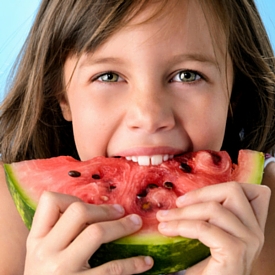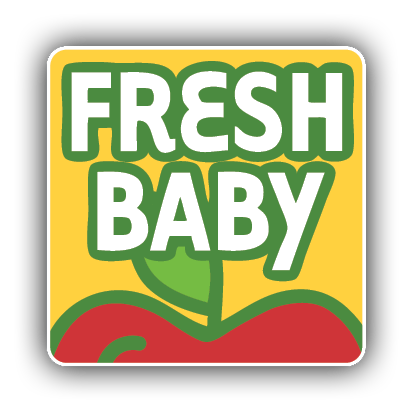
It’s summer and what a great time to buy Asian pears, Bartlett pears, blueberries, corn, cucumber, eggplant, figs, garlic, grapes, nectarines, red onions, Valencia oranges, peaches, sweet/Bell peppers, plums, potatoes, summer squash, tomatoes and watermelon.
Here are some of our favorite tips and recipes for this month’s produce!

Blueberries
Even though, blueberries have a short season, they are almost always available in your grocery store. They are grown throughout the US (35 of the 50 states), with local seasons ranging from early summer to the fall. And thanks to today’s modern transportation methods, blueberries from South America are available throughout the winter

Cucumber
Cucumbers have long been considered a great food to eat when trying to lose weight. They are low in calories, fat, cholesterol, and sodium. Cucumbers are 96% water by weight which makes them a refreshing snack on a hot summer day. While cucumbers are not one of nature’s “Super Foods” in terms of nutrition, they do add a crisp, healthy snap to salads and sandwiches and contain some Vitamin A, C and K, and a few other trace minerals.
Peaches
Interestingly, peaches are great for your skin. They contain phytochemicals, which are compounds produced by plants that are important for healthy skin and may offer enhanced protection against the sun. Peaches also contain large amounts of alpha-hydroxy acids, or AHAs. AHAs are a buzzword in the world of spa treatments. The AHAs in peaches help soften wrinkles, sun spots, age spots, blemishes and can even unclog pores.
Learn more about peaches here!
Pears
Pears are candy-like sweet, but like all fruits are surprisingly very healthy. Pears are a good source of Vitamin C, potassium, and natural dietary fiber. One pear will give you 16% of your recommended daily allowance of fiber of which 41% is pectin. Pectin is a type of soluble fiber that helps to lower blood cholesterol levels and regulate the body’s use of sugars.

Potatoes
Not only does the potato hold a great place in history, but also it also ranks high on the nutritional charts. The potato is fat-free and cholesterol-free. It is a healthy, nutritional powerhouse, loaded with fiber and essential vitamins and minerals. A medium-sized potato has more potassium than a banana and more vitamin C than an orange.

Tomatoes
Tomatoes are low in calories and very nutritious. They are high in Vitamin A, Vitamin C, Calcium and Potassium. Tomatoes are rich in the antioxidant lycopene which works in the body to prevent “free radicals” from binding with oxygen, a combination that can damage healthy cells. Lycopene helps reduce your risk of cancer (especially prostate), it guards against ARMD (Age-Related Macular Degeneration), an eye condition that may cause blindness, and may be an inhibitor to heart disease. Lycopene is found in fresh and cooked tomatoes. In fact, cooking tomatoes increase lycopene levels and yes, even ketchup contains lycopene.

Watermelon
Eating watermelon is not just fun – it is healthy, too! Watermelon is chock full of lycopene, a powerful antioxidant that fights free radicals which are highly reactive molecules that damage cell membranes, attack DNA, and cause disease. Tomatoes are often associated with lycopene, but watermelon contains higher levels than fresh tomatoes.
Watermelon can also help maintain cardiovascular health. Watermelon has amino acids, citrulline and arginine, that help maintain the arteries and blood flow. A 2-cup serving of watermelon is also an excellent source of Vitamins A, B6 and C. These vitamins provide optimal eye health, help the body cope with anxiety and panic, and bolster your immune system’s defenses.
Fruity Smooth and Creamy Popsicles


